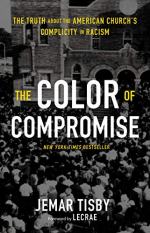
|
| Name: _________________________ | Period: ___________________ |
This test consists of 5 multiple choice questions, 5 short answer questions, and 10 short essay questions.
Multiple Choice Questions
1. Which English philosopher's work influenced the Declaration of Independence?
(a) John Locke.
(b) Immanuel Kent.
(c) Jean-Jacques Rousseau.
(d) Francis Bacon.
2. What word does Tisby use to describe white Christianity's attitude toward racism?
(a) Compassionate.
(b) Combative.
(c) Complicit.
(d) Competitive.
3. In the seventeenth and eighteenth century, which regions received the largest number of enslaved persons?
(a) North and Central America.
(b) Europe and Asia.
(c) The Caribbean and South America.
(d) Africa and Australia.
4. How does Tisby view the U.S. Constitution?
(a) As a document that takes no stance on racial issues.
(b) As a proslavery document.
(c) As an antislavery document.
(d) As a document that upholds the rights of Black people.
5. How many people attended the Cane Ridge Revival?
(a) 20-30,000.
(b) 5-10,000.
(c) 10-20,000.
(d) 30-40,000.
Short Answer Questions
1. When was the first Black Episcopal Church established in New York City?
2. What was the term used for the religious movement that emphasized a personal encounter with God?
3. Why was the antislavery clause removed from the Declaration of Independence?
4. According to Tisby, how did most enslaved Blacks respond to the rise of Christian revivalist preachers in the 1700s?
5. At the Constitutional Convention, delegates allowed the question of slavery to be set aside for 20 years. What term has been used to describe this compromise?
Short Essay Questions
1. Why did the Episcopalian diocese originally refuse to admit St. Philip's church?
2. What was the Fugitive Slave Clause?
3. What was the Three-Fifths Compromise?
4. Many white Christians believe that individual conversation and a spiritual awakening will naturally lead to racial equality. What is Tisby's perspective?
5. In Chapter 4, Tisby outlines arguments that white Christians used to justify slave-ownership. What are some of these arguments?
6. What was the concept of "hereditary heathenism," outlined by Tisby in Chapter 2?
7. Why did Johnathan Edwards oppose the African slave-trade?
8. What is the monogenesis theory of humankind?
9. What was the impact of the Missouri Compromise?
10. What was the impact of Nat Turner's rebellion?
|
This section contains 653 words (approx. 3 pages at 300 words per page) |

|




